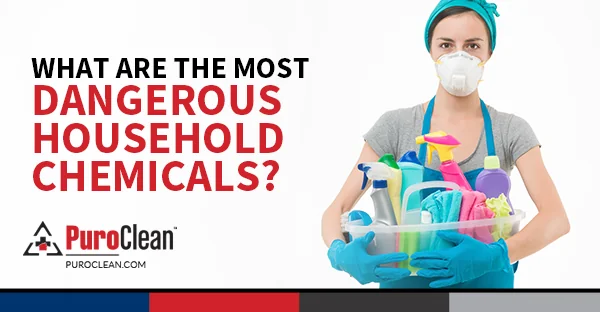Table of Contents

When dealing with hazardous materials, following strict safety guidelines is essential. Safe biohazard cleanup is not just about removing contaminants, it involves adherence to OSHA and EPA regulations to ensure safety, compliance, and environmental protection. Whether handling crime scene cleanups, medical waste disposal, or chemical spills, professional expertise is required to manage the risks properly.
Why OSHA and EPA Regulations Matter for Safe Biohazard Cleanup
The Occupational Safety and Health Administration (OSHA) and the Environmental Protection Agency (EPA) set guidelines that govern biohazard cleanup processes. These regulations exist to:
- Protect workers from exposure to bloodborne pathogens and hazardous materials.
- Prevent environmental contamination from biohazardous waste.
- Ensure businesses and property owners follow safe cleanup procedures.
OSHA Regulations for Safe Biohazard Cleanup
OSHA enforces workplace safety regulations to protect workers involved in biohazard cleanup. Some key OSHA standards include:
1. Bloodborne Pathogens Standard (29 CFR 1910.1030)
This standard outlines requirements for handling materials contaminated with blood or other potentially infectious substances. It mandates:
- Proper use of personal protective equipment (PPE).
- Safe disposal of contaminated materials.
- Worker training and vaccinations (such as Hepatitis B).
2. Hazard Communication Standard (29 CFR 1910.1200)
- Requires proper labeling of hazardous substances.
- Ensures safety data sheets (SDS) are available.
- Mandates employee training on hazardous material exposure risks.
3. Respiratory Protection Standard (29 CFR 1910.134)
- Requires the use of respirators when dealing with airborne contaminants.
- Ensures proper fit testing and medical evaluations for workers.
EPA Guidelines for Safe Biohazard Cleanup
The EPA regulates how hazardous waste is disposed of to protect human health and the environment. Some key guidelines include:
1. Resource Conservation and Recovery Act (RCRA)
- Governs the proper disposal of hazardous and biohazardous waste.
- Requires permits for handling and transporting hazardous materials.
2. Clean Water Act (CWA)
- Prohibits the release of biohazardous materials into water sources.
- Ensures wastewater from biohazard cleanup is properly treated before disposal.
3. Comprehensive Environmental Response, Compensation, and Liability Act (CERCLA)
- Addresses the cleanup of hazardous substance releases.
- Holds property owners and businesses accountable for improper disposal.
Steps for Ensuring Safe Biohazard Cleanup
1. Risk Assessment and Planning
Before beginning a cleanup, professionals assess the scene to identify hazards and determine the necessary safety precautions.
2. Proper Use of PPE
Technicians wear gloves, masks, goggles, and protective suits to minimize exposure to harmful substances.
3. Containment and Removal
Biohazardous materials are carefully contained, removed, and disposed of following OSHA and EPA guidelines.
4. Deep Cleaning and Disinfection
All affected areas are thoroughly disinfected using industry-approved cleaning agents to eliminate harmful pathogens.
5. Waste Disposal Compliance
Hazardous waste is transported and disposed of at certified facilities to prevent environmental contamination.
FAQs About Safe Biohazard Cleanup
1. What qualifies as biohazardous waste?
Biohazardous waste includes blood, bodily fluids, medical waste, contaminated PPE, and chemical spills.
2. Can I clean biohazardous waste myself?
Attempting a DIY cleanup is dangerous and may result in exposure to harmful pathogens. Professional services ensure proper decontamination and regulatory compliance.
3. How long does a biohazard cleanup take?
The time required depends on the severity of contamination. Small cleanups may take a few hours, while larger projects can take several days.
4. Who is responsible for biohazard cleanup costs?
Property owners or insurance policies typically cover the costs. Some crime scene cleanups may receive state assistance.
5. How do I know if a cleanup company is OSHA and EPA compliant?
Ensure the company is certified, follows proper safety procedures, and provides documentation of waste disposal compliance.
Why Choose PuroClean of Coral Gables for Safe Biohazard Cleanup?
When dealing with hazardous situations, choosing the right cleanup service is critical. PuroClean of Coral Gables provides expert safe biohazard cleanup services, ensuring compliance with OSHA and EPA regulations. Our trained professionals handle everything from crime scene cleanup to infectious disease disinfection, giving you peace of mind during difficult times.
Why Trust Us?
1. Certified and OSHA-trained technicians.
2. EPA-compliant waste disposal.
3. Rapid response 24/7.
4. Discreet and compassionate service.
5. Insurance assistance available.
For professional safe biohazard cleanup, contact PuroClean of Coral Gables today. Call us at (305) 894-4343 to schedule a service.




 PuroClean of Coral Gables
PuroClean of Coral Gables